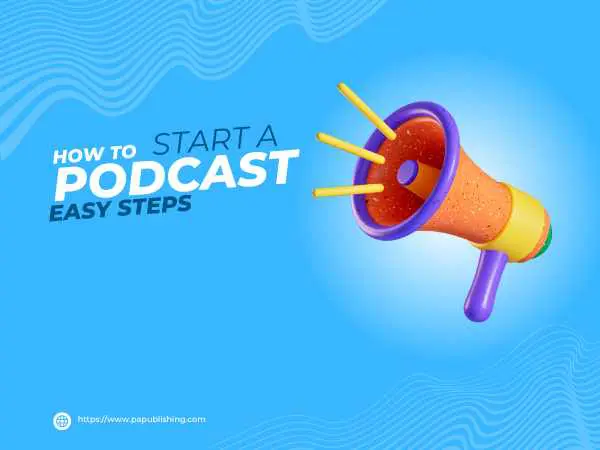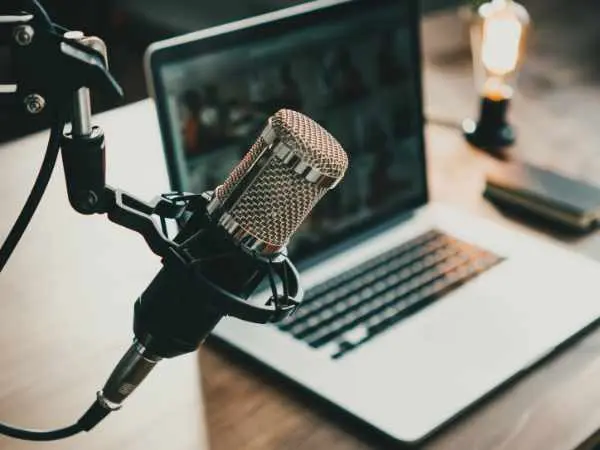How to Start a Podcast With Examples | 7 Quick Steps
Podcasts have become a conventional platform for sharing stories, discussing niche topics, and connecting with audiences globally. Their popularity stems from the fact that you don’t need to be a technical wizard or have a lot of money to start one. Learning how to start a podcast can feel like a breeze once you understand the basics.
That’s why, in this article, we’ll be giving you a step-by-step guide on how to start a podcast and attract a wide audience.
How To Start a Podcast?
We broke this ‘How to Start a Podcast’ guide into 9 easy steps so you can easily launch your podcast.
Step 1: Define Your Podcast Concept
Before we get into the technical aspects of starting a podcast, you need to develop a concept for it. A podcast concept is the ‘main idea’ that defines what your podcast is about, and what sets it apart from others. Here’s what you need to do to define your own podcast concept:
- Choose a Niche: First, you need to decide what your podcast is about. Be sure to choose a topic or niche that you’re passionate and knowledgeable about. Also, try to pick a topic with enough information to span over a hundred episodes.
- Craft a Unique Perspective: Once you’ve narrowed down a specific topic, consider what sets your podcast apart. For example, if you’re starting a cooking podcast, your content could specialize in launching a cooking business from home. This specific angle distinguishes your podcast and appeals directly to a specific demographic.
Step 2: Name Your Podcast
The title of your podcast is the first thing people see, even before they listen to a word on your show. So naturally, your podcast’s name should have a strong first impression and set the tone of your show. That’s why the name you choose must be memorable and specific to your branding and brand identity. Some other characteristics include the following:
- Four words or less
- Brief but intriguing
- Easy to spell and pronounce
- Enjoy saying out loud
For example, the title ‘Snaps Success’ for a podcast about professional photography tips follows the above criteria. This title is short, catchy, and gives listeners a clear idea of what the podcast is about. Once you have a title in mind, run it through the podcast name checker. This will ensure that your title is available and has not already been taken by someone else.
Step 3: Decide on a Format
The next important element when learning how to start a podcast is the podcast format. This refers to how the episodes are structured, the tone of the content, and how it engages with the audience. A format helps define the identity of the podcast and lets listeners know what to expect from each episode. Some examples of podcast formats to choose from are below:
- Interviews: This format features a single host who interviews guests who are professionals in their field or have exciting stories to tell.
- Scripted Fiction: This format introduces fictional stories similar to a radio drama or audiobook. The content includes sound effects and music to create an immersive storytelling experience.
- News: These podcasts discuss recent news and events. It offers listeners with detailed analysis and commentary.
Step 4: Create Podcast Cover Art
Like the podcast name, your cover art also makes an impression on the audience. In fact, 62% of listeners are more likely to open a podcast if they like the cover art. So, your chosen art should be visually appealing and attention-grabbing enough to attract listeners to your podcast. Other basic requirements include:
- Square Image (3000 x 3000 pixels)
- Resolution of 72 dpi
- PNG or JPEG File Types
- Colorspace RGB
Additionally, the color and tone of the cover art must reflect your podcast’s theme. For example, the cover should seem creative and fun if you’re starting a podcast about DIY artwork ideas. For this, you can use bright colors like yellow and blue. You can also use artsy images, like paintings and paintbrushes.
Step 5: Outline Your First Episode
When you’re learning how to start a podcast, it’s crucial you know how to outline your episodes. Unless you’re working on a scripted format, you’ll likely ramble on throughout the episode. So, to create an outline, you don’t need to script the entire episode. Instead, jot down a list of bullet points that will dramatically improve the flow of your episode.
For the bullet points, start with the end in mind. What is the purpose of this episode? What key message do you want your listeners to gain? Then, think about the main points you want to cover. These could be tips, stories, or examples related to your key message.
Step 6: Setup Podcast Equipment
Everyone knows that starting a podcast requires some basic equipment to ensure that your audio is clear and professional. Prices for a podcast set-up range from cheap $5 microphones to entire six-figure broadcasting setups. However, you don’t have to buy expensive equipment to get your podcast up and running. You just need the following basic equipment:
- Microphone: A good podcast mic enhances your audio quality and makes editing easier. Look for a mic that doesn’t pick up background noise.
- Headphones: These will help you monitor your audio while recording and editing. Buy headphones that are comfortable to wear and provide good sound quality.
- Recording and Editing Software: This software allows you to capture and control your audio from your microphone. Then, you can edit the audio to remove mistakes, add music, adjust volume levels, and create a polished final product.
Step 7: Record Your First Episode
Finally, here’s where the recording starts in our ‘How to Start a Podcasts’ guide. However, recording a podcast is actually a lot more complicated than it seems. You’ll need to follow a series of steps to prep and manage an effective recording:
- Set Up Your Recording Space: Try to record your episode in a silent room with lots of furniture, curtains, or carpets. They help reduce echoes and background noise, creating a cleaner and more comprehensible recording.
- Be Mindful of Your Mic Placement: Pay attention to how far your mouth is from the microphone. It should always be 2-4 inches away from the mic for the cleanest sound.
- Make a Test Recording: Record yourself talking at a consistent volume at several different positions. Then, you can listen to the recording to see which position gave the best audio quality.
Step 8: Edit the Audio
Podcast editing mainly cleans up the audio and changes the structure. It’s important that you keep the process simple and not overwhelm yourself by focusing on the production. To simplify the editing process, follow these tips:
- First Content, Then Distractions: On the first round of editing, focus on polishing the content. You can edit out the sound issues and distractions in the next round.
- Intro and Outro: Create an engaging intro and outro that hooks the listener’s attention. You can start off with a question or brief preview of the episode content. The outro can mention other episodes of your podcast the audience might enjoy.
- Fade Between Tracks: When cutting audio, you’ll sometimes find popping and clicking sounds in the finished product. For this, you’ll have to use the fade tool at the beginning and end of those clips.
Step 9: Set Up Podcast Hosting
The final step of ‘How to Start a Podcasts’ involves finding a suitable podcast host for your audio files. It’s a common misconception to upload your podcast directly to platforms like Apple Podcasts or Spotify. Instead, you can use a podcast hosting platform that stores your audio files and distributes them to podcast platforms.
These platforms help simplify the process of uploading, managing, and distributing your episodes. They’re made with podcasters in mind, making it easier for you to broadcast your episodes to reach the right audience.
Conclusion
Launching your podcast can be exciting once you have a clear idea of how to start a podcast. It begins with a clear concept of what you want to create and a well-thought-out outline of your plan. So, by following the steps outlined in our guide, you can create a podcast that makes a lasting impact on your audience.
Now that you know how to start a podcast, why not give it a try!



